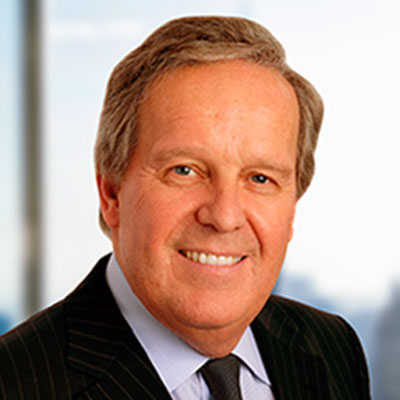Colgate Boosts Spending On Brands To Drive 3%-5% Organic Growth
This article was originally published in The Rose Sheet
Executive Summary
Colgate CEO Ian Cook expects brand investments will help boost organic sales 3%-5% in 2018. However, the firm's 24% increase in advertising and price cuts intended to spur product purchases failed to push sales to targets in the fourth quarter.
Colgate-Palmolive Co. is following up significant brand investment in 2017 that failed to deliver fourth-quarter sales targets with bigger spending in 2018 and expectations for 3%-5% organic growth.
CEO Ian Cook fielded numerous questions during Colgate's Jan. 26 earnings briefing on whether its planned 2018 marketing spend will offset macro trends the firm blamed for fourth-quarter worldwide sales growth of 4.5%, 2% organically, to $3.89bn, short of analysts’ estimates of $3.93bn sales and organic growth of 3%-3.5%. The firm's 2017 fourth quarter marked its fifth in a row missing its organic sales target.

CEO Ian Cook on ad spending: "We think about it bottom-up as an expense to support a portfolio of businesses."
He said the firm will spend even more on advertising worldwide this year after spending $369m in 2017, a 24% increase from 2016.
Colgate's advertising spending targets building its brands, particularly in lower-growth categories, on a country-by-country basis.
"That’s where you grow them, so we don’t think about it top-down as a ratio. We think about it bottom-up as an expense to support a portfolio of businesses and the innovation we are bringing behind those businesses," Cook said.
In 2018, advertising will “absolutely” be up as a percentage of overall sales, Cook said. “That’s because we think the portfolio of brands, the quality of marketing technique and the innovation we have in 2018 will be responsive to that investment to drive the organic growth in that 3% to 5% range,” he said.
Underscoring the importance of its advertising, Cook said the company is seeing improved market share performance and higher sequential growth rates, particularly in oral care where it invested heavily in the second half of 2017. He noted US sales moved from being down slightly in the first half to up 1% in the third quarter and up 1.6% in the fourth.
North America Sales Up 1%
Colgate’s ad spending has weighed heavily on its bottom line, with operating profit down 3% to $924m in the October-December period, the firm said.
Net income in the quarter was $323m, compared to $606m in the prior-year period, reflecting after tax charges resulting from the company’s global growth and efficiency program and a provisional charge of $275m related to US tax reform, the firm said. Lower prices on many products, expected to boost unit sales of products, also contributed to the income dip.
Colgate’s North American sales advanced 1% in the fourth quarter, excluding the Hill’s pet nutrition business, to $798m. Unit volume increased 4.5% with 3.5% lower pricing, the firm said.
In the US, it said it widened its leadership in toothpaste during the quarter with its market share at 35.5% year to date, the firm stated. New products included Colgate TotalClean-In-Between, Colgate Optic White Beauty Radiant, Colgate Sensitive Smart White and Tom’s of Maine Rapid Relief Sensitive toothpastes.
For the year, sales in the region slipped 2% to $3.11bn.
Sales in Latin America for the quarter grew 4% to $976m and 6.5% for the year to $3.88bn; European sales increased 13% to $610m in the quarter and 2% for the year to $2.39bn; Asia Pacific sales rose 6% to $670m for the quarter but were flat for the year at $2.78bn; and Africa/Eurasia sales advanced 2% to $245m in the quarter and 2.5% to $983m for the year.
Colgate's net sales for the year were up 2% to $15.5bn.
“Our market share performance is improving in many of the key markets where we have ramped up the advertising,” he said.
Looking ahead, Colgate plans to allot around 30% of its advertising spending in digital, varying by geography. The spending is greater than the 20% of total advertising it earmarked for digital in 2017, including online video, mobile marketing and in-store technologies. (Also see "Colgate Boosts Digital Marketing 20% To Engage With Consumers" - Pink Sheet, 12 Sep, 2017.)
Digital advertising will continue to include consumer engagement centers in New York and Topeka, Kan., which are staffed by marketing personnel around the clock to track individual messaging and enable Colgate staff to engage with individuals in real time.
The consumer engagement centers have been a success, allowing Colgate to bring greater speed and agility to how it delivers its marketing efforts, Cook said.
“Our increased digital media investment and focus on faster, easier ways to test and improve the creative has led to significant improvements in return on investments over the year,” he added.
Colgate said its e-commerce business grew 60% in 2017, and Cook said the company continues to lead in online sales of toothpastes in the US.
Colgate also said a restructuring program that began in 2012 to achieve savings of between $500m and $575m by 2020 has slimmed its product portfolio, including reducing its number of stock-keeping units by around 7% in 2017. (Also see "Colgate Boosts Digital Marketing Spend In 2012" - HBW Insight, 5 Mar, 2012.)
“We’re focused on reducing the complexity of our business by eliminating less productive SKUs. This allows us to be more efficient and effective in bringing these products to the marketplace,” Cook said
Colgate also has improved in packaging. “We have completely re-engineered our packaging process to get our products from design brief to the shelf in about one half of the time and about one-third lower cost across our packaging systems all around the world," the CEO said.
